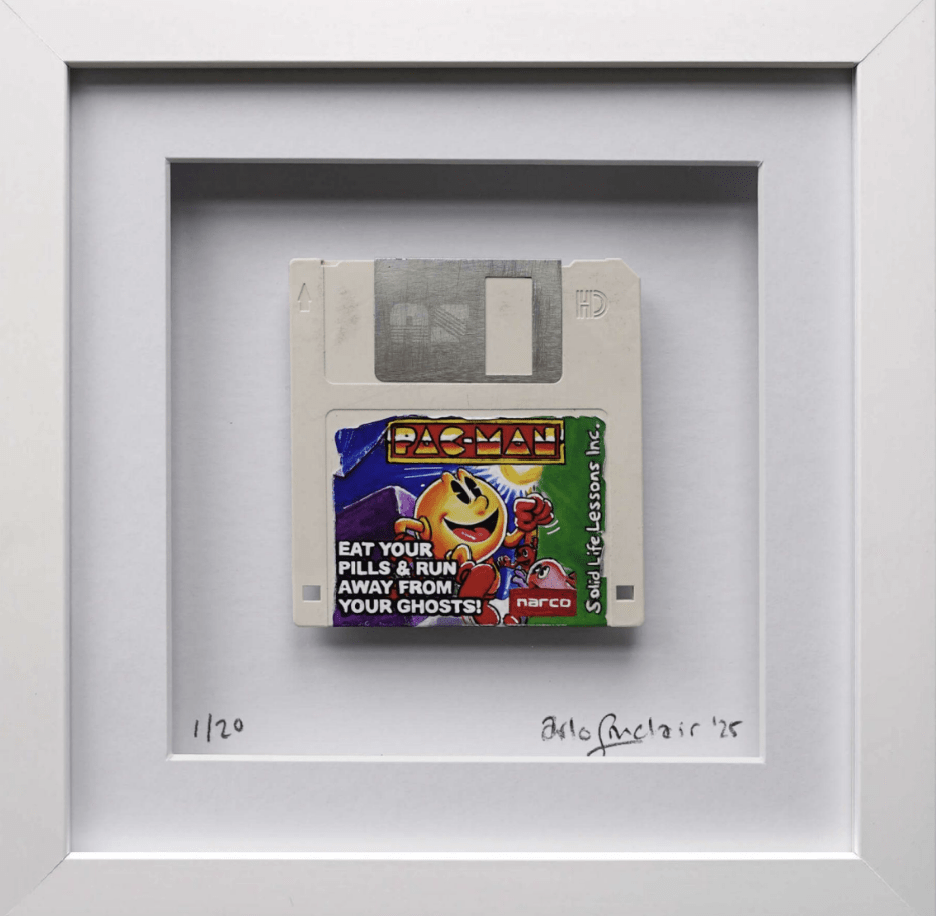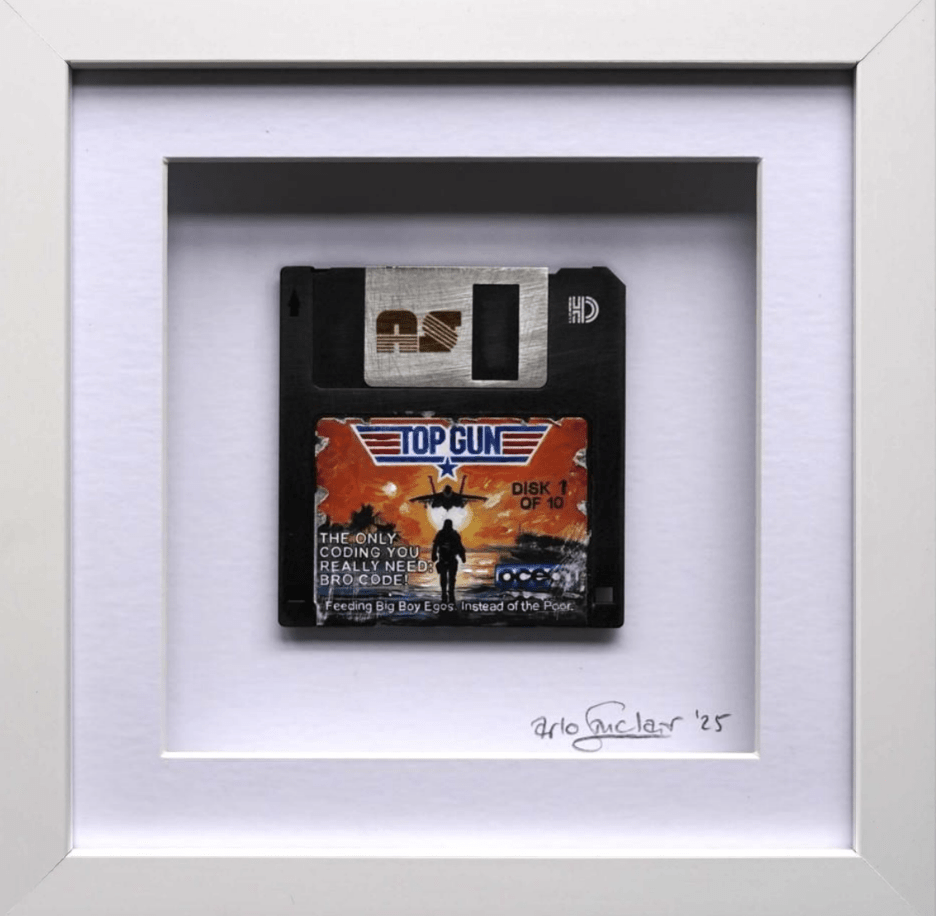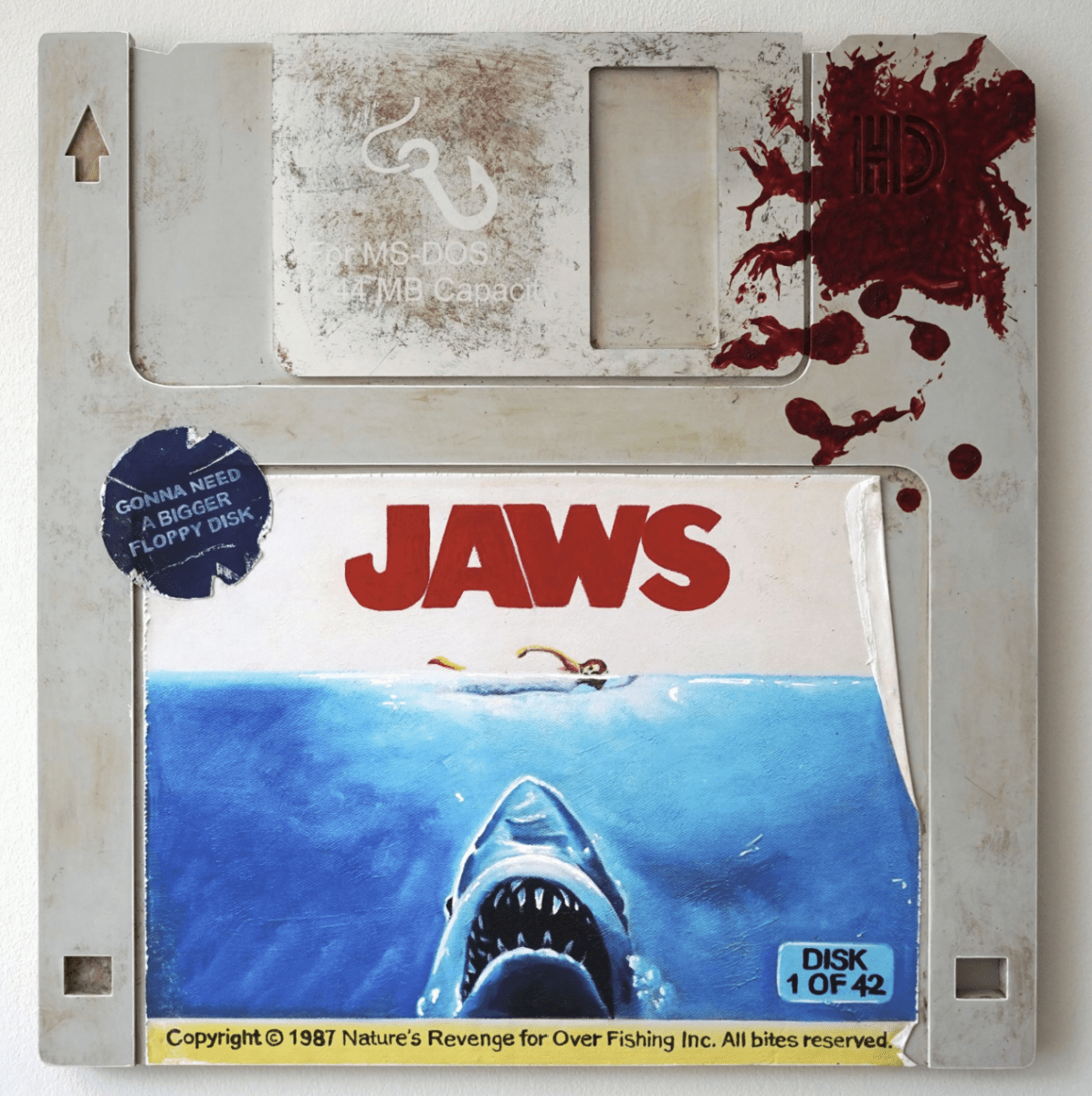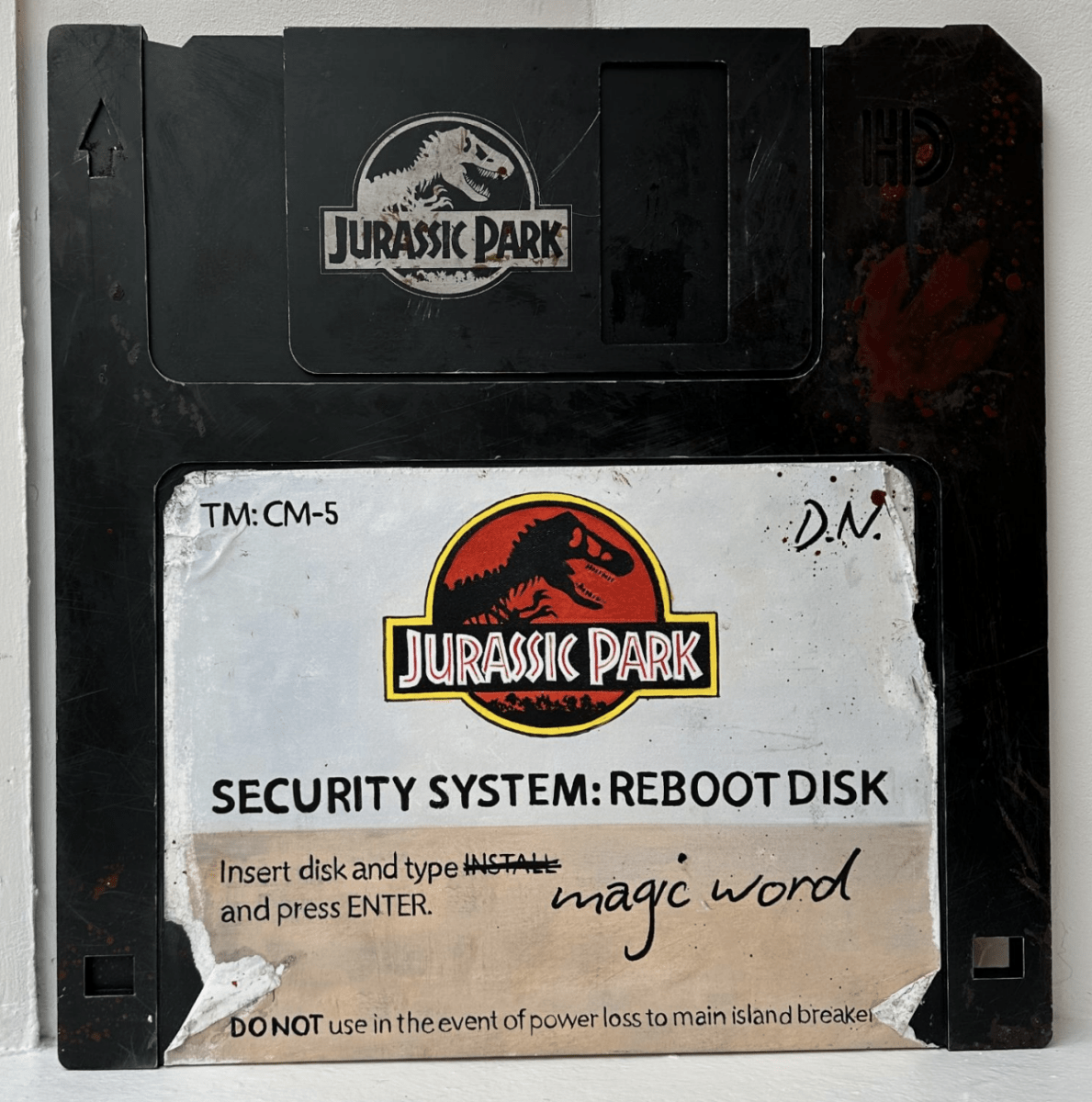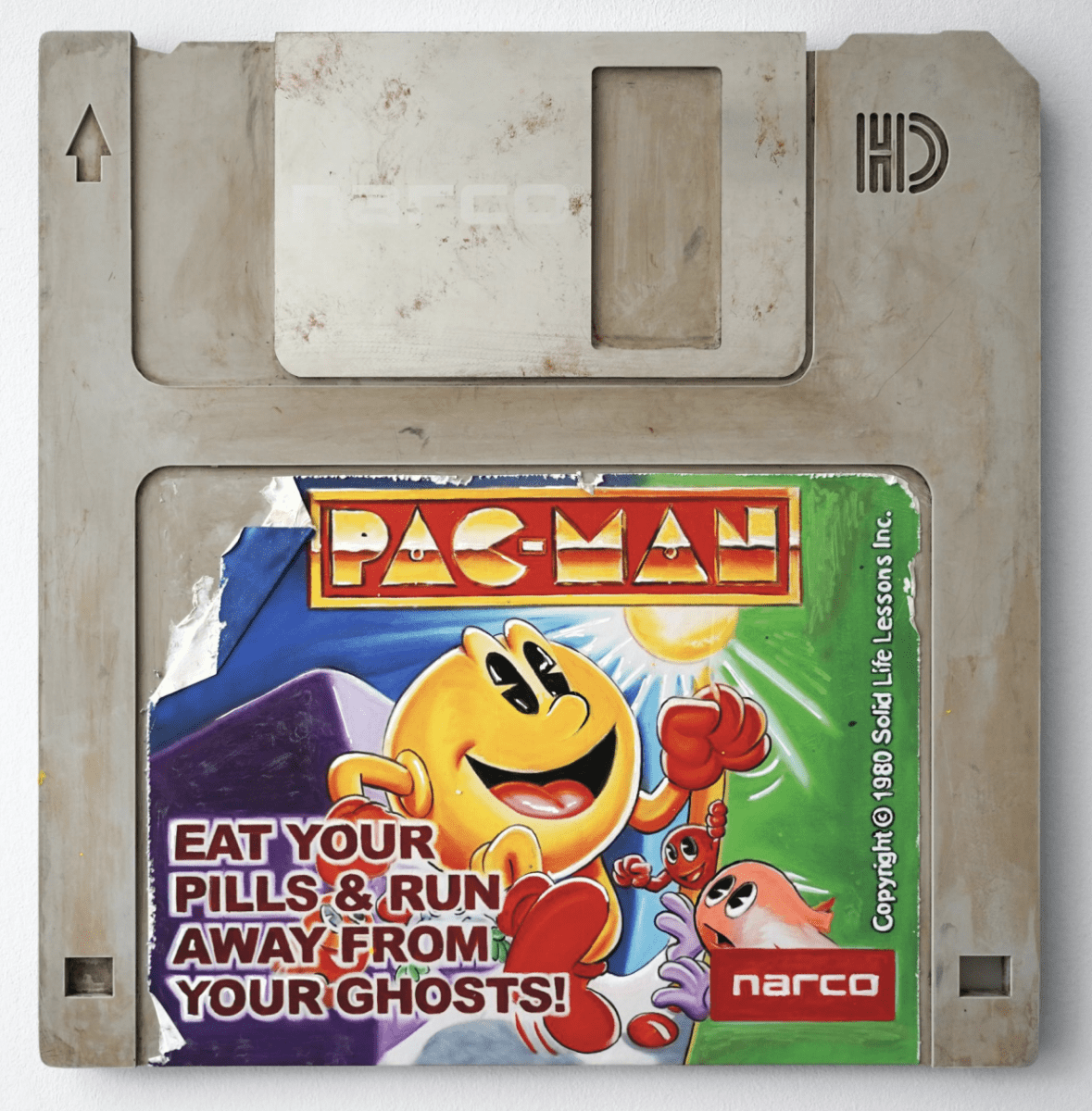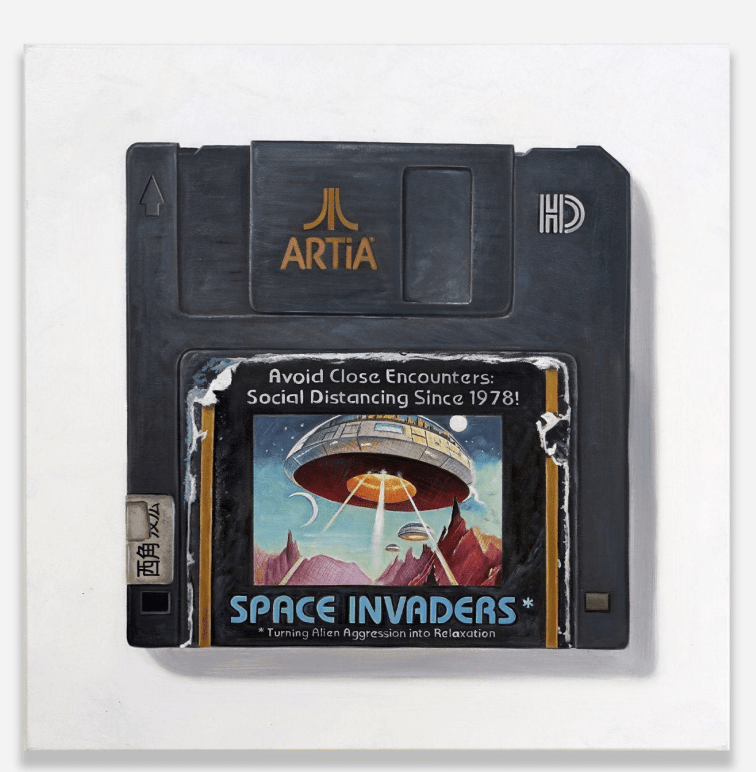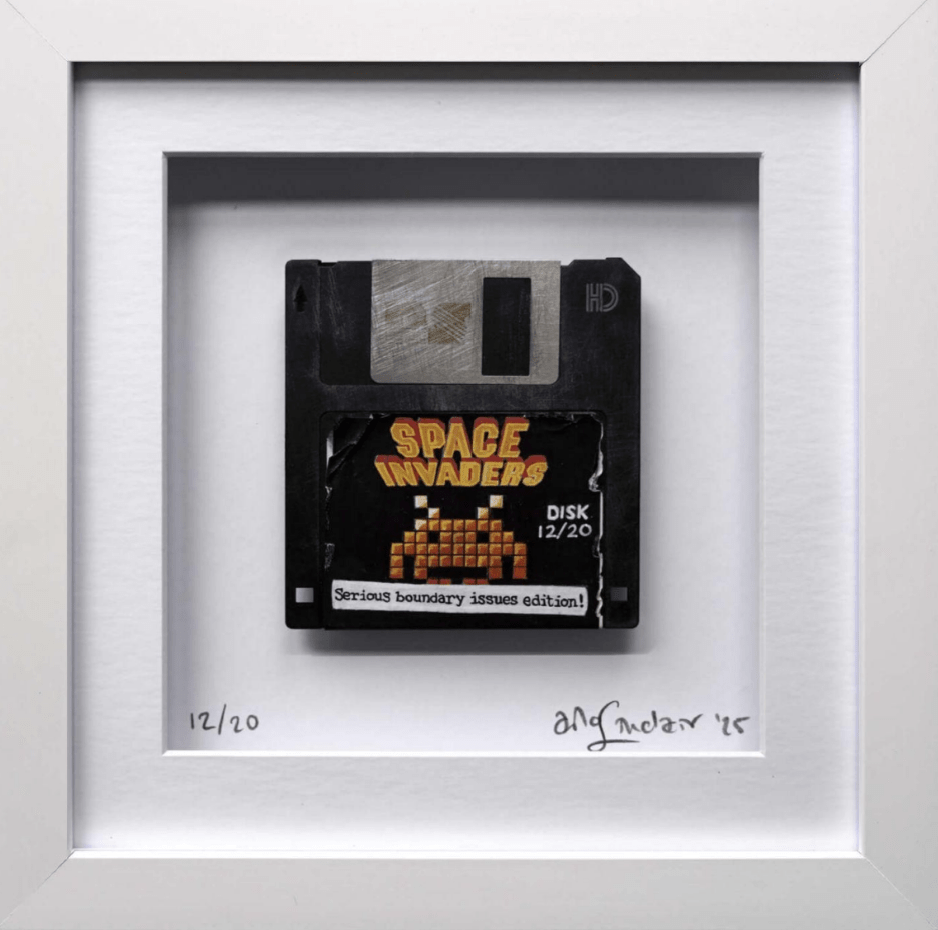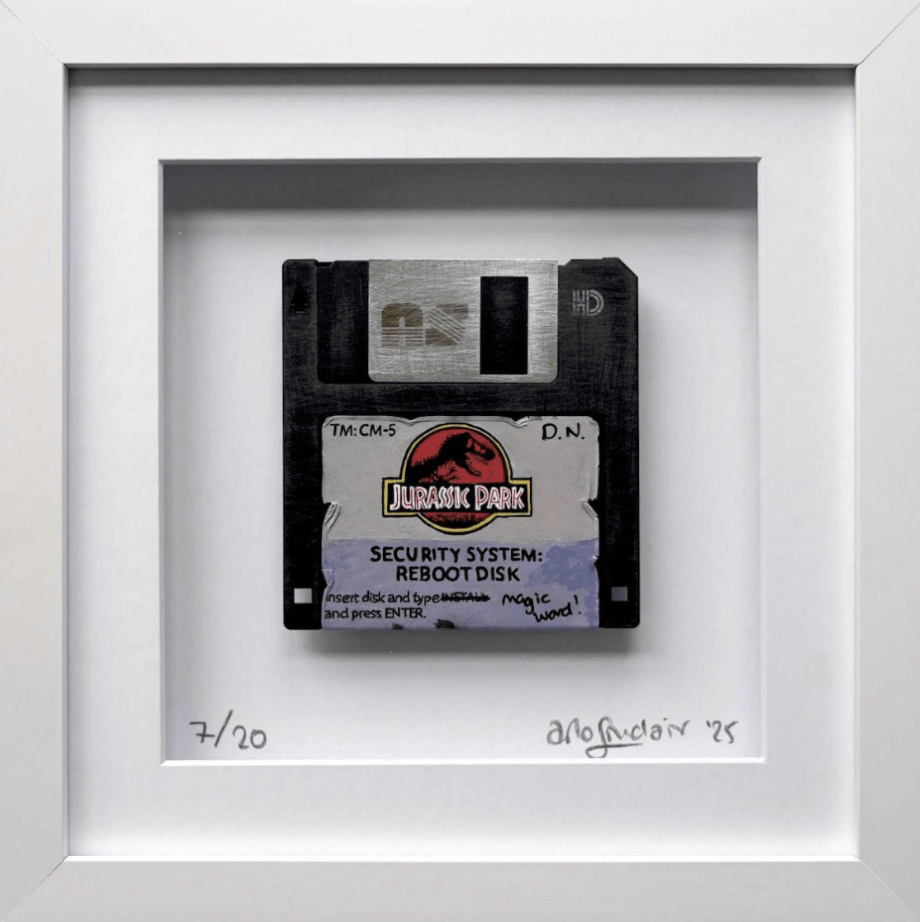Arlo Sinclair is a London-based contemporary artist whose work transforms obsolete technology into painted icons of cultural memory. Floppy disks, cartridges, broken consoles, and outdated hardware - once emblems of innovation - become his chosen canvas. Through hand-painted interventions referencing video games, Hollywood films, and internet folklore, Sinclair reframes these discarded fragments as relics of a digital age that promised permanence but delivered obsolescence.
Rooted in the legacy of Pop Art and Urban Contemporary movements, Sinclair’s practice updates the visual strategies of Andy Warhol, Roy Lichtenstein, and Keith Haring. Like Warhol’s soup cans and Lichtenstein’s comic panels, Sinclair elevates mass imagery into fine art. Unlike mid-20th-century consumer goods, however, his objects are already redundant - symbols of failed corporations and forgotten formats. Playful overlays - a Super Mario Bros. start screen on a floppy, a “Fake Moon Landing” NASA disk, or a cartridge reimagined with 1980s film graphics - inject humor and satire, recalling the mischievous spirit of Banksy and KAWS.
Born in South Africa, Sinclair’s relationship with technology began early. As a child, his grandfather repaired a broken Commodore 64, sparking a fascination that led him to code his own games when he couldn’t afford to buy them. “That computer was more than a machine - it was an escape hatch,” Sinclair recalls. “Now I paint the door and scribble a joke on the handle.” This interplay of reverence and irreverence continues to fuel his practice.
Series such as Too Big to Fail mock the collapse of corporate giants like Blockbuster, Kodak, and Toys “Were” Us, while Conspiracy Disks satirize internet subcultures with tongue-in-cheek CIA-labelled “JFK” floppies and “Area 51” backups. In each case, Sinclair uses outdated media as both artifact and punchline, reminding viewers how quickly “cutting-edge” technology drifts into absurdity.
His work resonates with a culture increasingly defined by nostalgia. At a time when retro consoles, reissued merchandise, and vintage aesthetics dominate, Sinclair taps into collective longing - but never indulges it uncritically. His paintings offer the glow of a childhood loading screen, only to juxtapose it with the realities of data breaches, AI deepfakes, and mountains of plastic waste. As Sinclair explains: “My work isn’t about nostalgia for its own sake - it’s about the digital age and the myths, promises, and failures it leaves behind.”
This blend of humor, critique, and design has earned Sinclair a devoted following among collectors, particularly within the tech world. His works are held by Silicon Valley engineers, Web3 pioneers, and Fortune 500 executives - individuals who once grew up as outsiders in gaming arcades and LAN parties but now shape global digital culture. Critics have described his practice as “geek luxury”: fine art that crystallizes the aesthetics of an era once dismissed as marginal, now central to power, memory, and identity.

